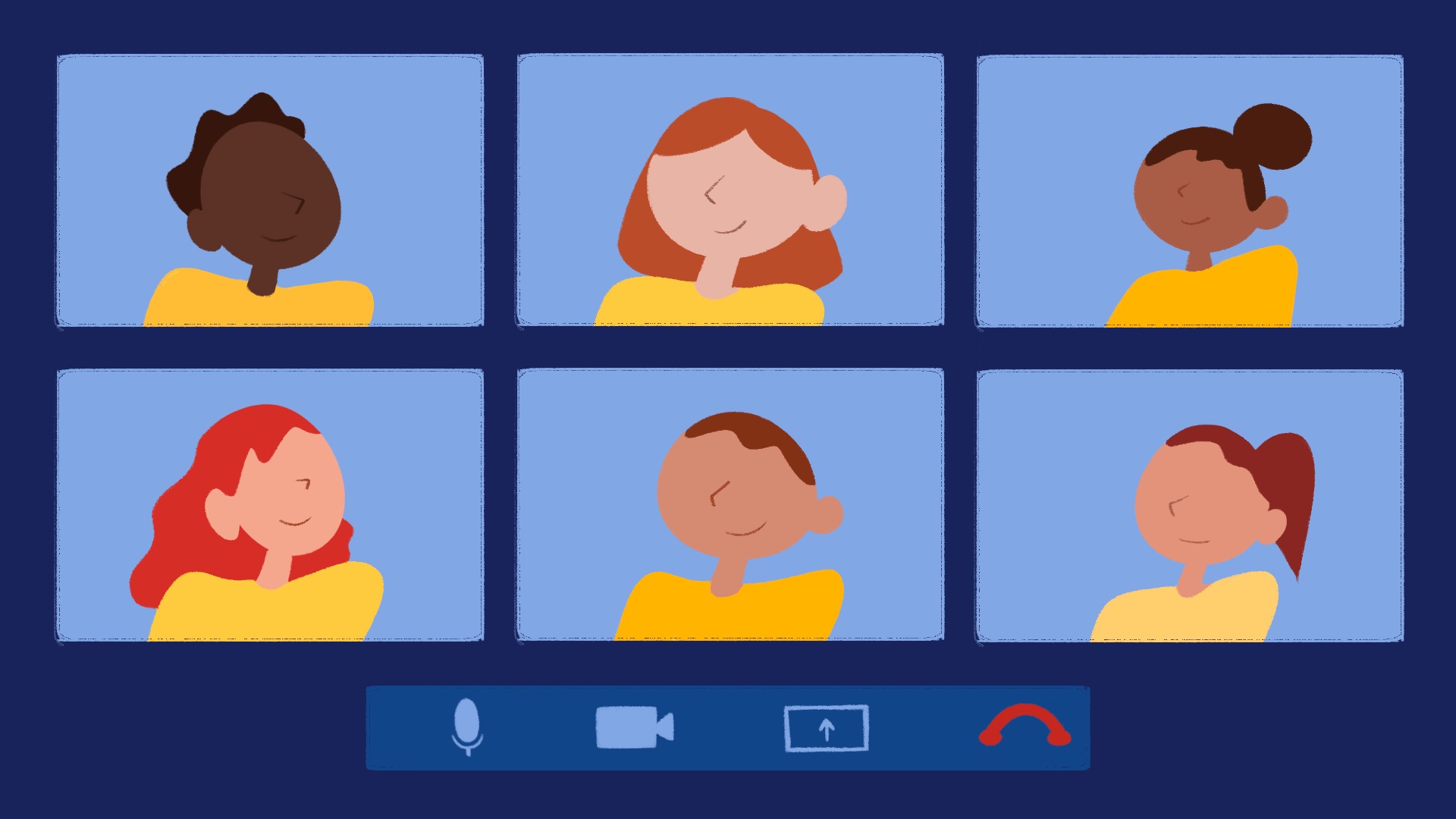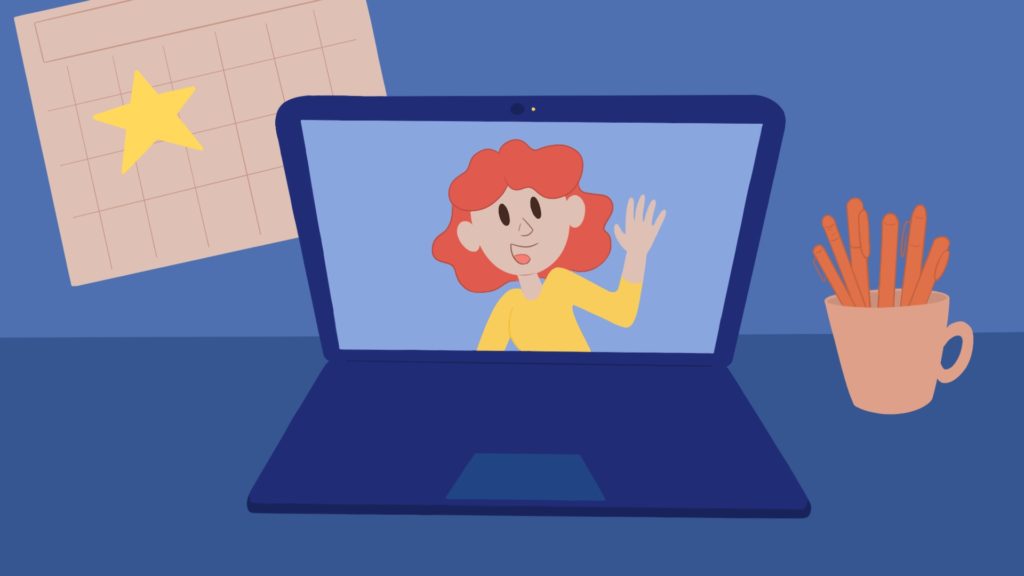Whether you’ve been doing it for a while or are just starting out, the increase in remote work has affected everyone over the last few years. However, it has created a unique set of challenges as pertains to creative positions. You might now be more isolated working on a project and need a reminder to reach out to colleagues. Collaborations won’t happen as naturally as they do in person, so finding tricks to inspire a team are crucial to the creative process. The rigid nature of online interactions may also restrict creativity and delay the finish line— especially if you’re new to the gig. Nevertheless, a remote job can allow for exciting new career endeavors you might not have been able to experience prior.
Since working from my home state of Virginia, while most of the Ducks are centered in Chicago, I’ve become well versed in the ways of new remote creative jobs. Between meeting coworkers and working on explainer video productions via Slack chats and Zoom calls, I’ve seen a lot of successful digital communication, and learned to adapt processes more typical of an in-person position at a video agency. My time as a Creative Video Intern has been an experience full of learning, and I wanted to share some tips in case you, or someone you know, is starting a new remote role.
Don’t Take Yourself Too Seriously
In my first week at Demo Duck, I still had some natural shyness about myself, trying my best to navigate the new job without feeling like I was overstepping. This behavioral choice, I would come to find, is ill-fitted for the virtual world. This was notably brought to light when I was sitting in on an internal brainstorm call for a client project. Joining the meeting, I had prepared to simply sit and listen, taking in an experience I had yet to be a part of.
However, those plans were quickly thrown out the window. The team immediately pulled me into a warm-up game and asked for my feedback throughout the call. At first, I was very self-conscious of myself, but as the meeting progressed, I tried to make an effort to let go and have fun with the process. The more I talked, the more I learned and understood, thus allowing me to better help when we began assembling the explainer video concept presentation for the client.
We’re already virtual, so rigid nerves can make you seem less engaged. Depending on the video conference software and the size of the call, your little box might even be moved off the host’s screen— talk about fading into the background. That’s why pushing yourself to be as open and engaging as you can early on makes an enormous difference with first impressions for new team members and clients. If you feel your virtual self has turned invisible don’t be afraid to speak up in the chat or use the “raise your hand” feature. In a creative environment, it’s essential to be just that; creative. Expressing yourself can only help the process. Being looser, especially when working creatively, will help not only you but your team as well.
There are also small things you can do as an individual to help keep the flow of a meeting going. If you find yourself staring at your stiff reflection through the webcam, consider disabling your video so you can no longer see yourself. Most of us aren’t movie stars, so watching ourselves on video calls can be exhausting and awkward. With your video box not visible to you, even if only for a few minutes, most people can relax a great deal.

It’s also good to remember to stretch between calls. It can be easy to get into the After Effects zone and end up sitting for hours on end while working on a project. Taking a stretch break not only works as a physical reset but a mental one too. Oh, and consider a warm-up game before a meeting or brainstorm to alleviate tension and get people in a creative state— it’s a common practice at Demo Duck.
Communicate, Communicate, Communicate!
Without the in-person office, communicating virtually is even more crucial. Since projects take a team of people to complete, communication is vital in the creative workforce. Even when working from home, it’s good to proactively reach out to fellow employees to check in— and not wait for someone else to set up a meeting or send you a DM. Sharing feedback and asking for a critique are common ways to reach out with purpose but keep things small. Both methods also help you stand out as someone who strives to learn and grow through your desire to start a conversation.
At Demo Duck, we use Slack as our go-to for team communication. The use of separate channels allows for teams to collaborate independently on the various corporate video productions that they’re most directly involved with. Meanwhile, company channels help keep everyone in contact and provide a way to share new ideas and bits of inspiration. Most times we keep things more professional and on-topic in those project channels, while we leverage DMs and company channels for more ad hoc, fun, and random small talk.
But no matter what messaging software you use or even if email is company standard, reaching out can make a big difference and set you up for success early on. Consider even talking to your co-workers about what channels of communication they prefer. How do they like feedback? What times of the day do they like to just put their head down and get work done? Taking the time to understand your new co-workers’ communication styles, especially while working remotely, helps make things flow that much smoother.
It’s Not Just About Work
As a remote worker, it can be easy to forget that talking to coworkers, doesn’t have to be all work talk all the time. With scheduled Zoom calls, it can feel like you only talk to others when it’s important. But if time allows, maybe share a fun story about another project you’re working on or something you learned recently. Often at the start of our calls, we will briefly talk about our day or just chat casually before the meeting officially starts. Basically, we’re building rapport with each other, an old sales technique, because of those spontaneous interactions in the office, where this used to happen, aren’t occurring anymore. It works as a powerful way to bond with your coworkers, leading to smoother conversations and a better understanding of how your colleagues think. This in turn allows for the creative process to run effortlessly.

Here at Demo Duck, we share ‘Weekend Highlights’ at the start of Monday meetings. It’s a fun way to start a call and share one exciting or interesting thing that happened over your weekend. We also share any ‘Media Highlights’ we have, which is usually an excuse to plug any show or movie we’ve seen recently. Having things like this start the week keeps the company atmosphere positive and keeps everyone close. Plus it’s better than talking about the weather…though anything is.
When I first joined Demo Duck, my team members set up personal meetings to introduce themselves and get to know me, which instantly made me feel more comfortable early on. Of course, depending on the company, this may or may not be standard. If not though, I would urge you to find time to video call the people you will be working closely with or perhaps suggest this to the person who offers you the position. Even if most of your interactions are through messages and emails, having a face and voice to associate can help immensely.
Remote Control
Demo Duck, and many creative companies like it, have more remote employees than ever before. And that’s not a bad thing. Remote work opens the door to a wide array of jobs you might not have been able to take if it was in person. Now you can build your career without necessarily having to commit to a move. But it can still be helpful to remember some of the ways a creative job might be affected by the remote setup. Just focus on the ways that work for you so that you start your new job confidently.
